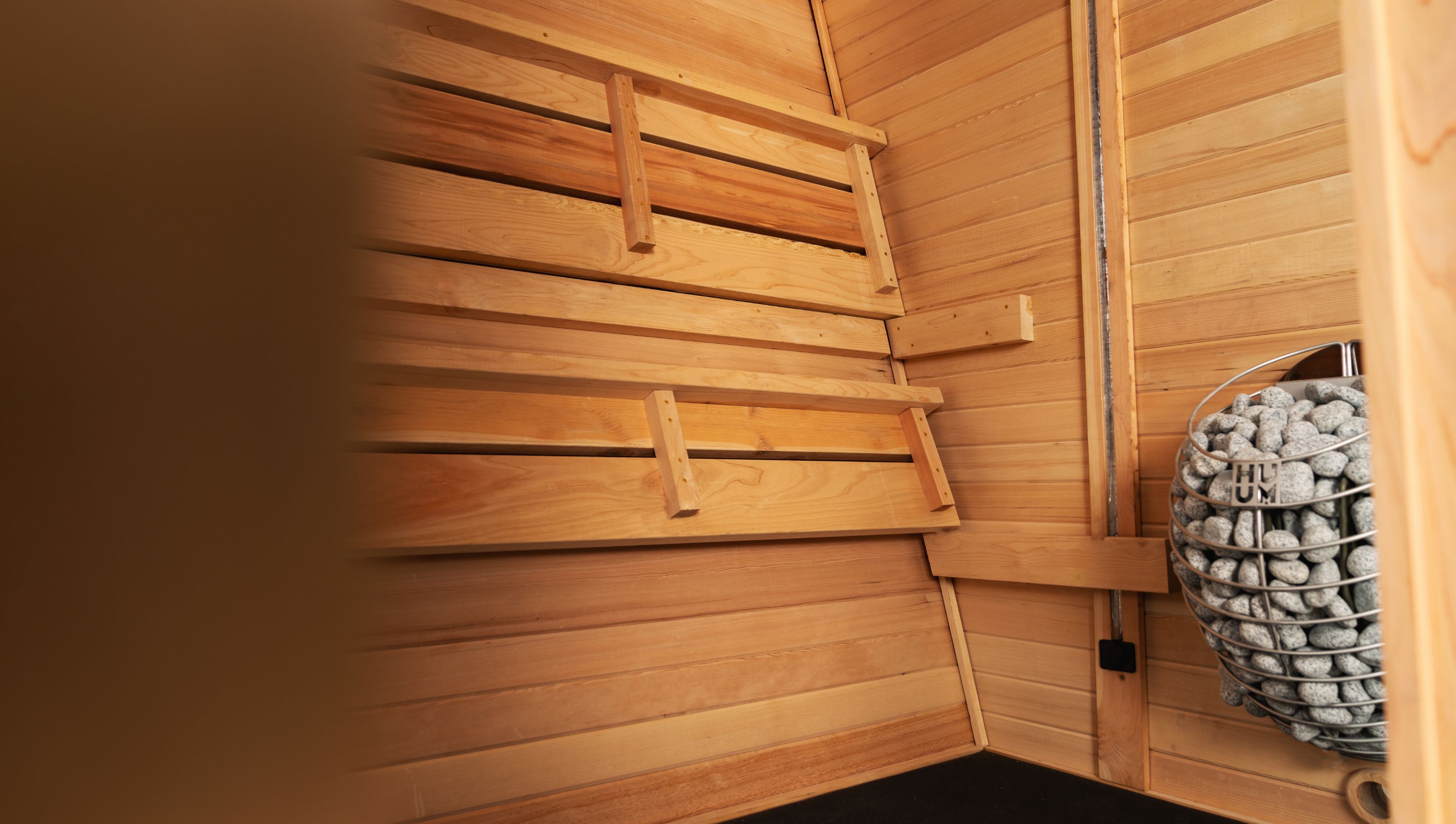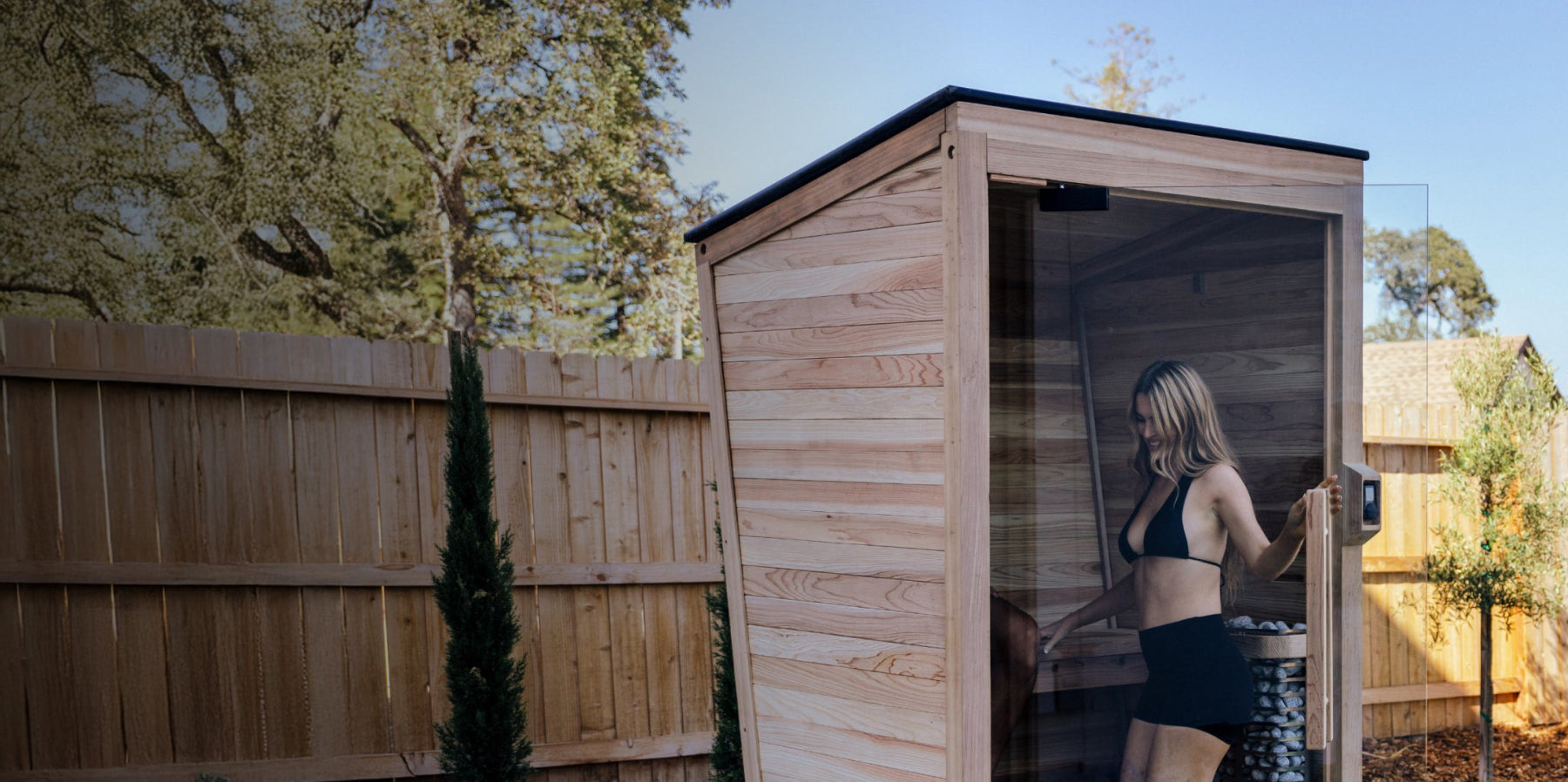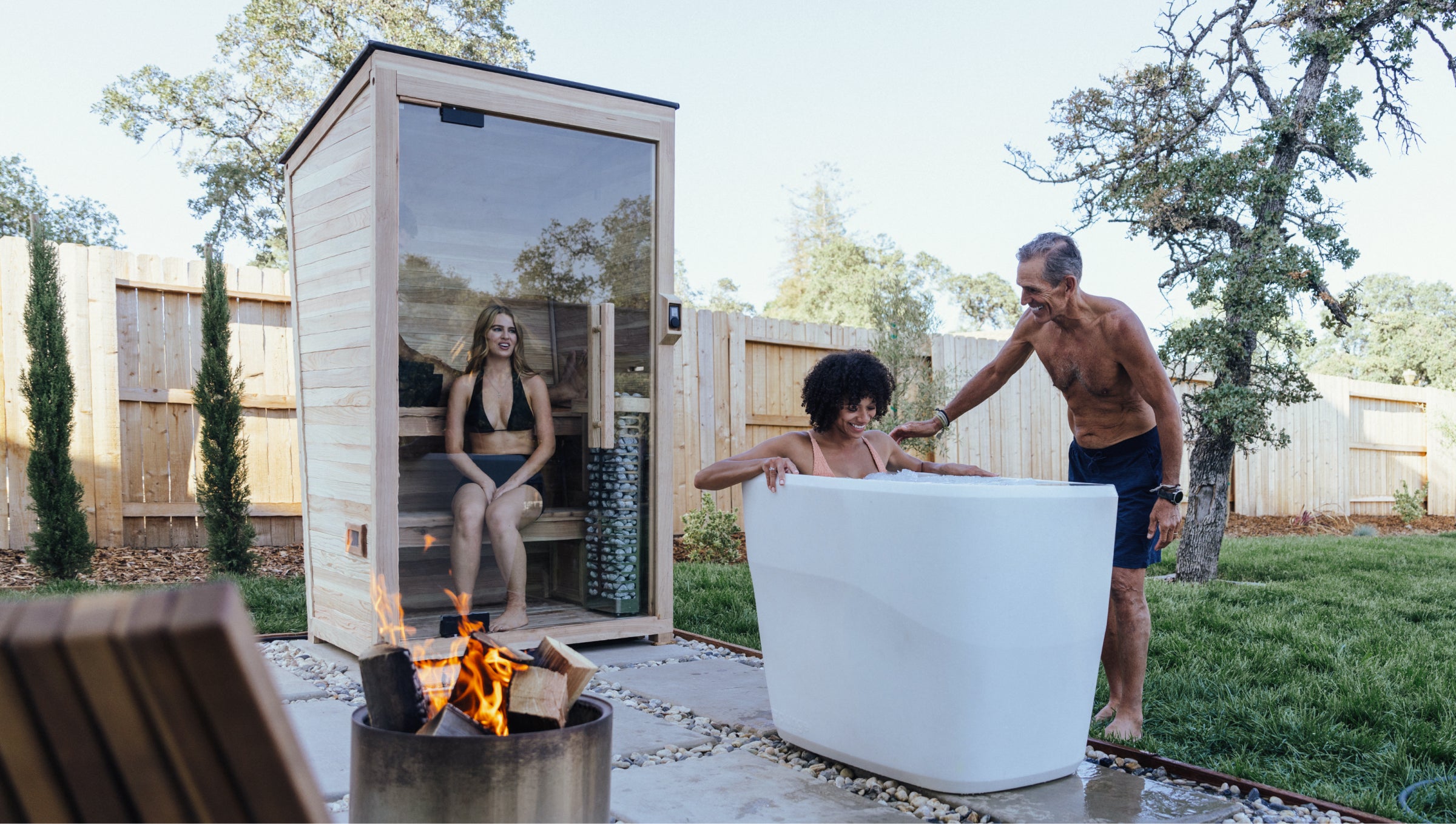
Best Wood for Sauna: A Comprehensive Guide to the 9 Most Popular Types
When it comes to constructing different types of saunas, the wood you choose is not just a matter of aesthetics but a crucial decision that can affect the sauna's functionality, durability, and overall experience. There are numerous variables to consider, from heat retention and resistance to moisture, aroma, and environmental sustainability.
This guide aims to simplify this complex decision-making process by providing a comprehensive overview of the nine most popular types of wood used in saunas, what makes them different, and how to choose the right wood for your specific sauna needs.
Understanding Infrared vs. Traditional Wood Saunas
Wooden saunas, whether traditional or infrared, rely on wood's distinct properties to elevate the experience. Traditional saunas prioritize heat and moisture resistance to indirectly warm the body through heated air, while infrared saunas require wood that complements the therapeutic benefits of light-based heating.
The choice of wood is crucial for creating the desired ambiance, temperature control, and overall sauna longevity, whether it's about withstanding the rigors of traditional sauna conditions or enhancing the soothing atmosphere of an infrared sauna.
How To Choose the Best Wood for a Sauna
Selecting the right wood for your sauna involves understanding the unique properties and characteristics of each wood type. As mentioned above, different woods offer varying benefits, impacting not just the sauna's functionality but also the overall experience. When shopping for sauna wood, consider these key qualities:
- Antimicrobial: Woods with natural antimicrobial properties help maintain a hygienic environment, reducing the growth of bacteria and fungi.
- Appearance: The visual appeal of the wood, including its grain and color, contributes to the aesthetic ambiance of the sauna.
- Aroma: Certain woods emit pleasant natural scents when heated, enhancing the sensory experience.
- Durability: A durable wood withstands frequent temperature changes and humidity levels inside a sauna, ensuring longevity.
- Resistance to Heat: Woods that resist warping or cracking under high heat are ideal for maintaining the sauna's structural integrity.
- Resistance to Mold: Woods with natural resistance to mold are crucial in the humid sauna environment to maintain health standards.
- Resistance to Water: Water-resistant woods prevent decay and damage from the sauna's moisture, preserving the wood's quality.
- Texture: Consider the texture of the wood, including its smoothness and absence of knots and splinters, for comfort and safety.
9 Types of Sauna Woods
Let's take a closer look at each of the nine popular sauna woods to guide your choice for the perfect experience and get the most out of your sauna benefits.
Cedar
Cedar trees are known for their durable, aromatic wood. These trees are commonly found in various parts of the world, each region offering its own variety. Cedar is perfect for those who prioritize a long-lasting, aromatic sauna experience and are willing to invest in higher quality, durable material. It's less suited for those on a tight budget, but investing in quality materials upfront can lead to a sauna that stands the test of time and delivers an indulgent aromatic experience. Plunge's Sauna, crafted from high-quality cedar and hemlock, embodies this commitment to excellence, ensuring that your investment pays off in the form of a lasting, top-tier sauna experience.
Appearance and Use
Cedar is characterized by its warm, reddish hue, often with a straight grain and a relatively uniform texture. The presence of knots varies, adding to its natural appeal. Its aesthetic qualities make it a popular choice for sauna interiors.
Advantages and Disadvantages
One of the key advantages of cedar is its natural resistance to moisture and decay, making it one of the best woods for the humid conditions of a sauna. It's also known for its pleasant, soothing aroma when heated, enhancing the sauna experience. Additionally, cedar's insulating properties help maintain consistent temperatures, making it great for sauna detoxification. However, it can be more expensive than some other woods and its scent may be overpowering to those who are sensitive to strong aromas.
Hemlock
The hemlock tree belongs to the pine family. These trees are native to North America and parts of Asia and are known for their long, straight trunks. Hemlock is an excellent choice for those who prefer a sauna with a subtle, uniform look and a less intense aroma. It's ideal for individuals seeking a balance between quality and cost.
Appearance and Use
Hemlock has a light color, typically ranging from a pale yellow to a light reddish-brown. It usually has a straight grain with a fine texture, and the presence of knots is minimal. This clean and uniform appearance makes it a favorite for modern sauna designs.
Advantages and Disadvantages
The primary advantage of hemlock is its resistance to warping and rotting, crucial for the high humidity conditions of a sauna. It's also less aromatic than cedar, which might be preferable for those sensitive to strong scents. Hemlock is a good insulator and has a lower thermal conductivity, which is ideal for maintaining stable temperatures. On the downside, it may not be as durable as cedar, and its less distinctive appearance might not appeal to some.
Pine
Pine pine trees are coniferous trees widely distributed throughout the Northern Hemisphere. Similar to hemlock, they are known for their fast growth and tall, straight trunks. Pine is an excellent choice for those on a budget or who prefer a traditional, rustic sauna appearance. It's less suitable for someone looking for a wood that can withstand high humidity without frequent maintenance or who prefers a more uniform, knot-free appearance.
Appearance and Use
Pine typically has a light color, ranging from creamy white to yellowish. Its grain is generally straight and often features a noticeable pattern of knots, lending a rustic charm. This aesthetic makes it a popular choice for traditional sauna designs.
Advantages and Disadvantages
One of the advantages of pine is its affordability compared to other sauna woods. It also has good insulating properties, helping to maintain consistent temperatures. However, pine is less resistant to moisture and decay than woods like cedar or hemlock, making it more susceptible to damage in a humid sauna environment. The knots in pine can also be a disadvantage, as they may lead to uneven surfaces or potential weak points.
Basswood
The basswood tree, also known as linden, is prevalent in the Northern Hemisphere, particularly in Europe and North America. They are characterized by their large leaves and fragrant flowers. Basswood is ideal for a minimalist, modern sauna design and for users who prefer a hypoallergenic environment. It might not be the first choice for those looking for a more durable wood or one that contributes a natural scent to the sauna experience.
Appearance and Use
Basswood has a pale, almost white color with a subtle grain, creating a clean and modern appearance. It's generally free of knots, offering a smooth and uniform texture.
Advantages and Disadvantages
A major advantage of basswood is its hypoallergenic nature, making it an excellent choice for those with sensitive skin or allergies. It's also relatively lightweight and has good insulating properties. However, it's not as durable as some other woods and might not hold up as well in the humid conditions of a sauna. Basswood also lacks the natural aroma found in woods like cedar.
Common Aspen
Aspen trees are part of the poplar family. They are widespread across the cooler regions of the Northern Hemisphere, known for their fast growth. Aspen is well-suited for those who prioritize a modern, minimalist aesthetic and a hypoallergenic environment. It may not be the best choice for those seeking a more durable wood or a wood that enhances the sauna experience with a natural scent.
Appearance and Use
Similar to basswood, aspen is characterized by its light, almost white color, giving it a clean and modern look. It typically has a straight, fine grain with minimal knots, contributing to a smooth, uniform appearance.
Advantages and Disadvantages
One of aspen's main advantages is its low heat conductivity, making it comfortable to touch even at high temperatures. It's also hypoallergenic, which is beneficial for users with sensitive skin. However, aspen is softer and less durable than wood like cedar or hemlock. It also doesn't have the natural aroma that some other woods possess.
Nordic Spruce
Nordic Spruce is sourced from the spruce trees found abundantly in the Nordic countries, and are known for their resilience to cold climates. This wood is a great choice for those seeking a traditional sauna experience with a natural, rustic look at a reasonable price. It may not be the best option for those looking for a wood that's highly resistant to moisture or for a knot-free, uniform appearance.
Appearance and Use
This wood features a pale, creamy color, often with a hint of yellow or red. The grain is typically straight, with a fine texture, and it may have visible knots, adding to its natural charm.
Advantages and Disadvantages
Nordic Spruce is valued for its excellent insulating properties, making it ideal for maintaining stable temperatures in saunas. It's also relatively affordable compared to some other woods. However, it's not as resistant to moisture and decay as some other options, and its knots can be a disadvantage in terms of smoothness and comfort.
Eucalyptus
Eucalyptus trees are native to Australia but are now found in various parts of the world. These trees are known for their fast growth and hardy nature. Eucalyptus is perfect for those looking for a durable, aromatic sauna experience and are willing to invest in high-quality wood. It's less suitable for those on a tight budget or for whom availability is a key concern.
Appearance and Use
Eucalyptus wood has a distinctive appearance, usually a rich reddish-brown color, with a straight grain pattern. It may have some knots, but generally less than woods like pine.
Advantages and Disadvantages
A significant advantage of eucalyptus is its durability and strength, making it suitable for long-lasting sauna use. It's also known for its pleasing aroma, which can enhance the sauna experience. However, it can be more expensive than other woods and might not be as readily available.
Douglas Fir
Douglas-fir trees are predominantly found in North America and are known for their size and strength. This wood is ideal for those prioritizing structural strength and a distinctive appearance. It might not be the first choice for those seeking comfortable surfaces, high moisture resistance, or a wood that contributes a pleasant scent to the sauna environment.
Appearance and Use
This wood typically has a light to medium brown color with a hint of red or yellow. It features a straight, pronounced grain and can have many knots.
Advantages and Disadvantages
Douglas fir is valued for its strength and durability, making it suitable for structural components of saunas. However, it's less resistant to moisture than other sauna woods we’ve discussed, which can be a drawback in humid conditions. It also lacks the natural aroma of woods like eucalyptus.
Poplar
The poplar tree is widely found across the Northern Hemisphere and is known for its rapid growth and tall stature. Poplar is ideal for those looking for a hypoallergenic, smooth wood with a clean appearance. It's less suitable for those seeking the longevity and aromatic experience provided by more traditional sauna woods.
Appearance and Use
Poplar has a pale yellow to creamy white color and typically features a straight, uniform grain. It has fewer knots compared to woods like pine, which contributes to a smoother appearance.
Advantages and Disadvantages
One benefit of poplar is its resistance to warping and shrinking, important in the varying temperatures of a sauna. It's also hypoallergenic, making it suitable for sensitive users. However, poplar is less durable than harder woods and may not have the same insulating properties. It also lacks the natural aroma of woods like hemlock.
Sauna Wood Types FAQs
Why are Saunas Made Out of Wood?
Saunas are made out of wood because it's an excellent insulator, helping to maintain heat. Additionally, many kinds of wood are resilient to warping in high heat and humidity, provide a natural aroma, and offer a soothing, organic aesthetic.
What is the Best Wood for Sauna Walls?
The best wood for sauna walls is one that is durable, resistant to moisture and heat, has low resin content, and offers a pleasant aroma (such as cedar).
What is the Best Wood to Use in a Sauna?
Cedar and hemlock are considered the best woods for saunas due to their durability, resistance to moisture and decay, and pleasant aromas. Cedar, in particular, is highly valued for its natural insulating properties and unique scent. To explore top-quality cedar and hemlock saunas, consider our elegant yet robust at-home sauna.
Enjoy All the Benefits of an At-Home Cedar Wood Sauna
At Plunge, we understand the importance of quality and craftsmanship in sauna construction. That's why we've chosen cedar and hemlock, woods renowned for their durability, resistance to moisture, and delightful aromas, for our home saunas.
Our saunas are designed with innovation in mind, suitable for both indoor and outdoor installation. We prioritize easy assembly and use only high-quality materials to ensure each sauna offers the pinnacle of luxury and functionality.
Discover the Plunge difference and elevate your wellness routine with our premium sauna today!







